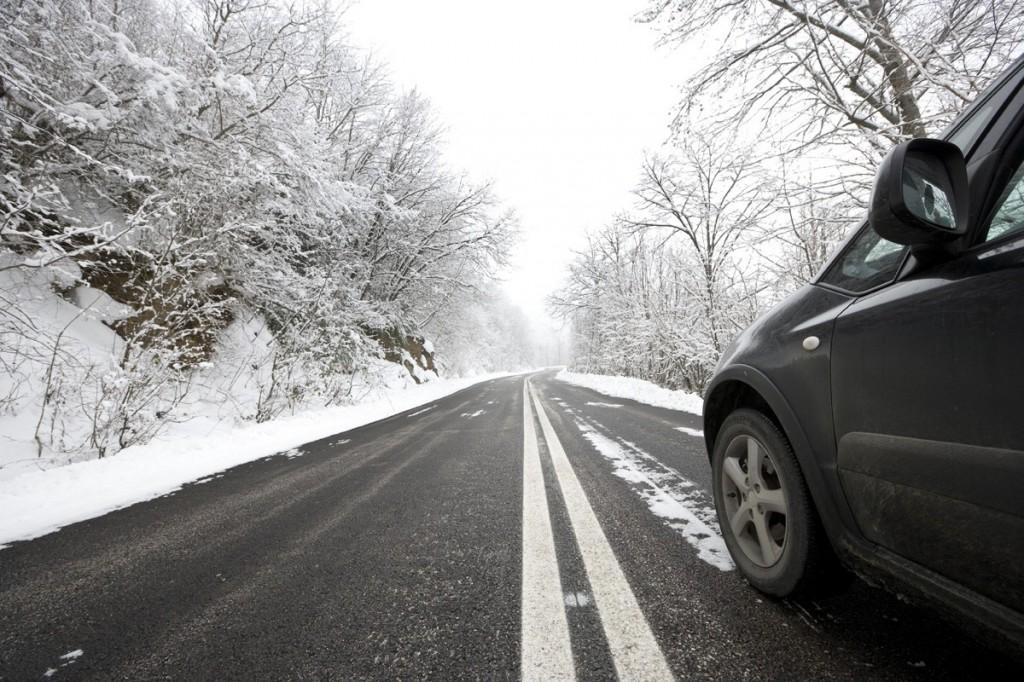Thanks to advanced technology, modern cars do not require the same intensive winterization ritual that older models do in order to stay in tip top shape in the coming harsh winter months.
However, winter is still very tough on countless components in your car and can render them malfunction, on top of the challenge of driving on snowy and icy roads. Therefore, it is vital to winterize your car to ensure safe driving in such hazardous conditions.
This pro’s winter car prep checklist includes crucial maintenance works that you must perform to drive safely and avoid failure, tires prep, exterior prep, how to stay warm and what you must store in your trunk to survive in case of emergency or being stranded in the snow.
Contents
Pro’s Winter Prep Checklist: Survival 101
In short, a pre-winter thorough maintenance and repair is ideal to make sure everything works the way they should, especially if winter is extreme where you live.
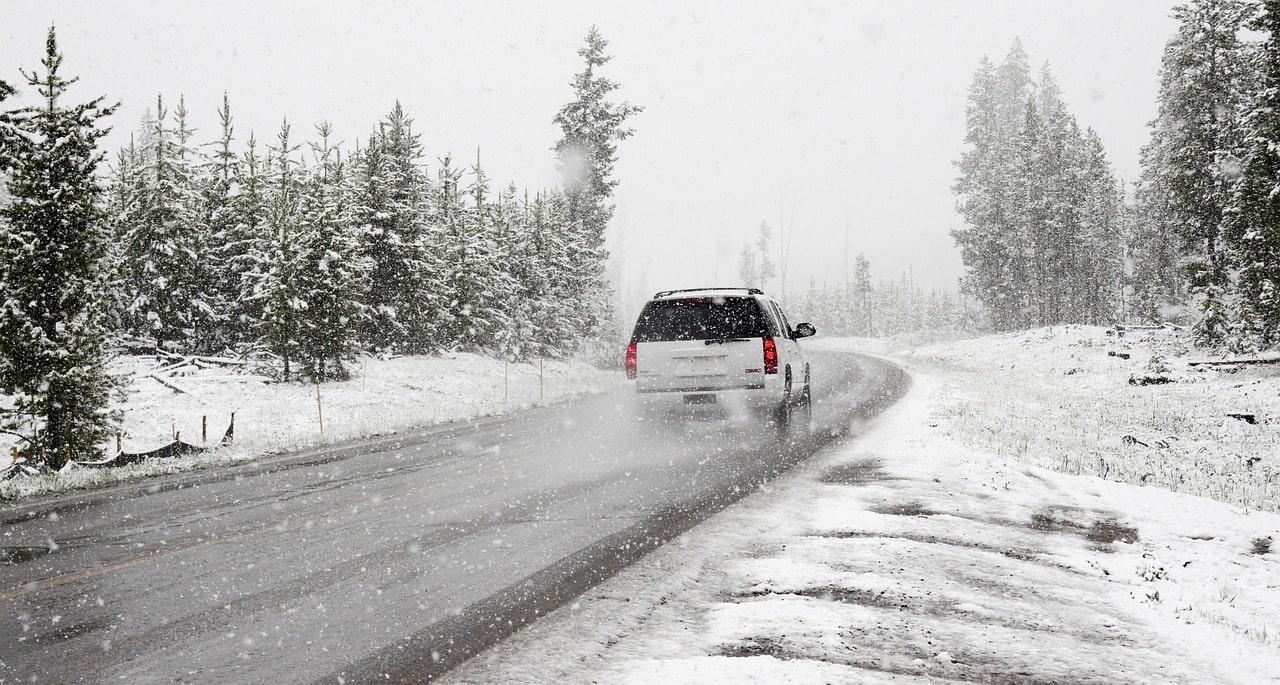
Below are the most important items that need your absolute attention, which you can perform in your own garage with easy to find tools. For more, refer to our comprehensive guides on DIY maintenance.
Otherwise, head down to a mechanic to have your vehicle serviced and winterized.
READ MORE
- Top 6 Jeep For Driving In The Snow
- Pro Tips On How To Perfectly Drive Sideways In The Snow
- Crucial Tips For Getting Your Car Unstuck From Snow
Check Your Brakes
Needless to say, with low traction on snowy, icy roads, the last thing you want is to have a malfunctioning brake while driving in harsh winter conditions.
If you are experiencing any weird symptoms like squealing brakes or spongy brakes, learn how to troubleshoot and fix at home with the following guides on common brakes problems.
Make sure to check and if necessary replace the brake pads and brake calipers, the components of the braking system that are more prone to wear and tear.
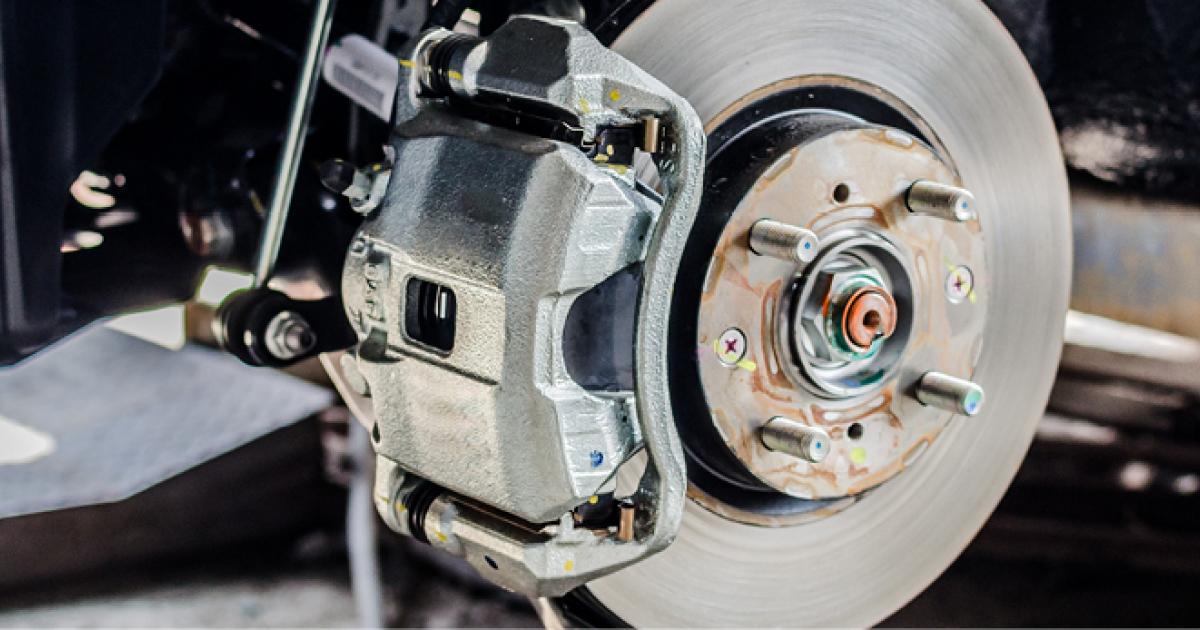
In addition, don’t forget to check your brake fluid and refill if necessary to make sure your brakes are ready to operate in freezing conditions.
Engine #1: Change Your Oil
Your car’s engine needs oil for lubrication during start-up to run properly. Without enough lubrication, or proper lubrication, you may experience slow-start or your car might fail to start at all.
In cold weather, your engine oil gets thicker, thus it doesn’t circulate as easily through your engine as when it is thin. The lower the temperature, the thicker the oil gets. Thick engine oil is one of the most common reasons for troubles starting your car on a cold morning.
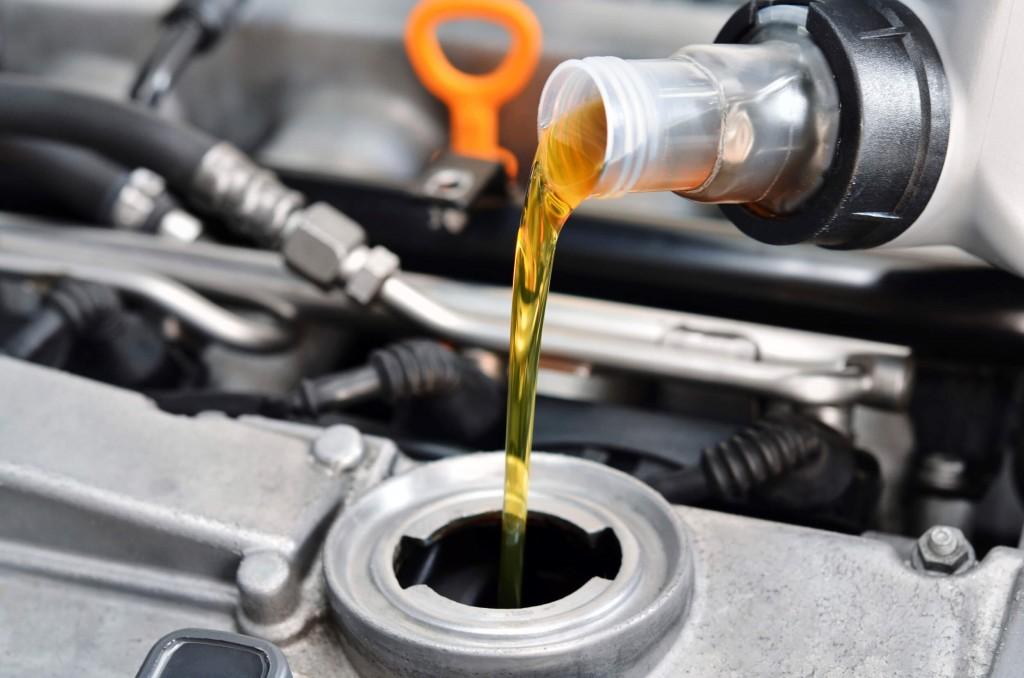
Good news is dealing with this headache is pretty straightforward. Simply change your engine oil to a thinner option to begin with. Your owner’s manual typically specifies the recommended viscosity levels, or thickness, of engine oil for use in different climates and weather.
Engine #2: Check antifreeze mixture
Everything that affects the proper working of your engine is of top priority, after the engine itself. Another component that can render engine dysfunction and failure is the radiator.
Quite different from the radiator of your home, a radiator in a car is a vital part of its engine cooling system. The engine runs your car by generating combustion inside the combustion chamber, and along with it also a large amount of friction. This results in a whole lot of heat inside the engine.
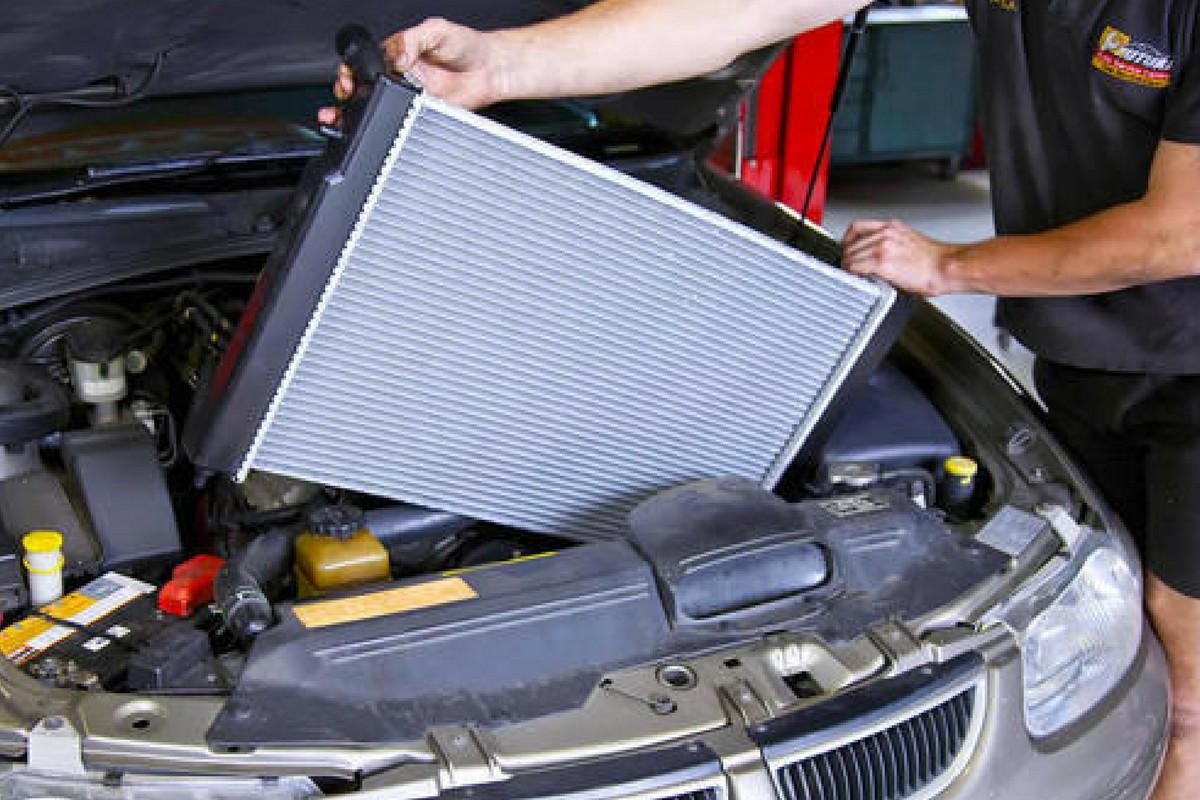
If this heat is not diverted elsewhere to cool down the engine while it’s running, the engine will get too hot and like every other parts of your car, this will eventually cause tremendous damages.
The radiator is one of the engine’s multi-part cooling systems, along with the lubricating oil which reduces friction and the exhaust system through which heat exits the combustion chamber. When the thermostat in front of the engine detects the the engine reaches a dangerous temperature, the radiator then kicks in by releasing a mixture of water and coolant to quickly cool down the engine.
This coolant is also referred to as “antifreeze”. As the name suggests, in addition to prevent overheating by raising the boiling point of the mixture, it also prevents the water from freezing. However, in extreme winter conditions, potential freezing is highly likely.
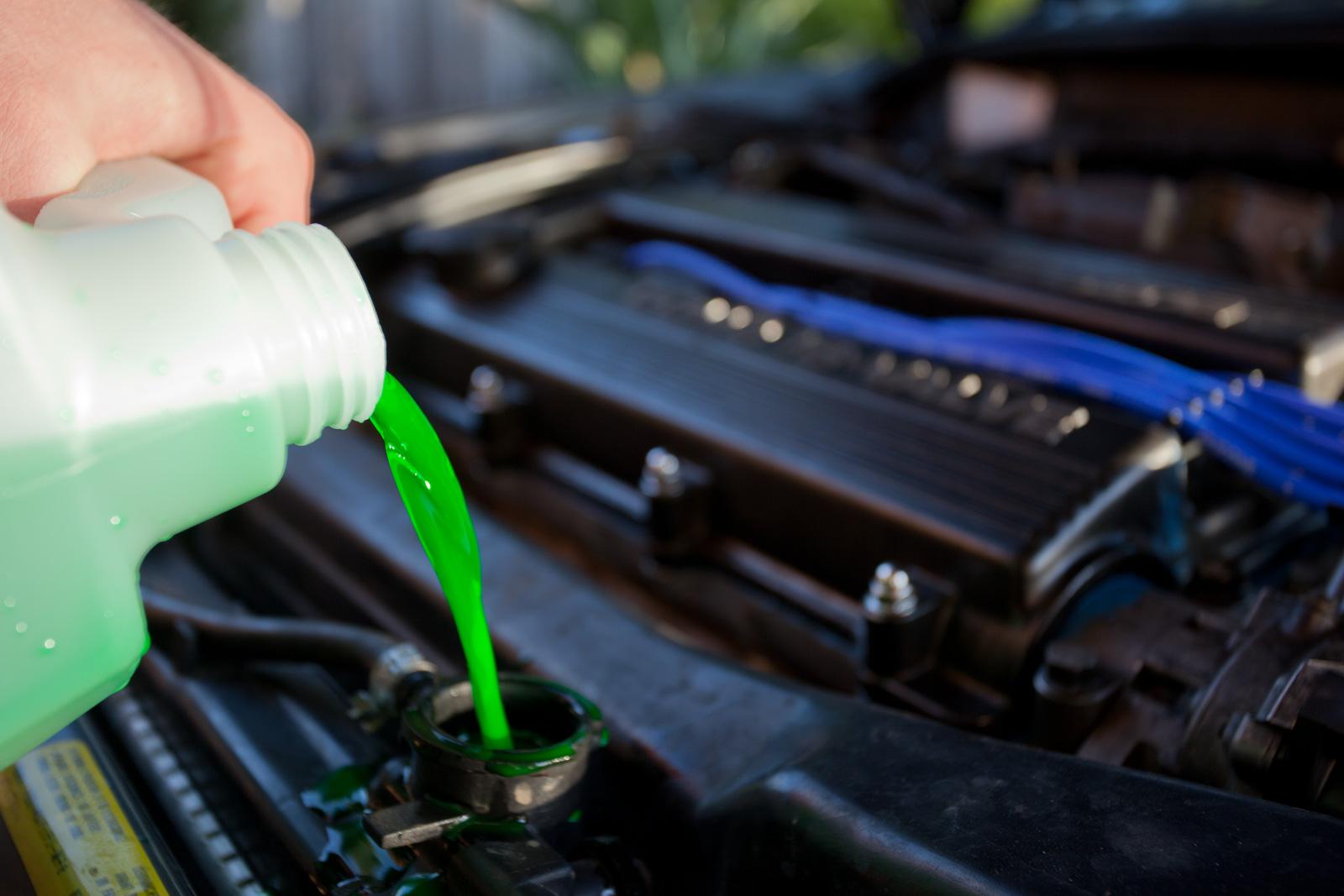
To prevent this, maintain a ratio of coolant and water in your radiator between 50:50 and 70:30. Best to check with a technician which type of antifreeze is best for your particular engine.
There are essentially 3 types of antifreeze, each is specifically formulated to best cater for its designated engine type so it can function in extreme cold and heat.
Engine #3: Check belts, hoses, wires and cables
The many belts, hoses, wires and cables can go bad at any time of year, but if this happens in winter, you could be stranded and covered in snow for a very long time. Both extremely hot and cold weather reduce their life expectancy, and especially sudden or quick shift from hot to cold make them much more susceptible to cracking and breaking.
The belts are vital to a car’s engine. They move many important parts, including the alternator, water pump, and the power steering pump. If any of these parts don’t operate properly, your car might not run or you will have to deal with expensive repairs.
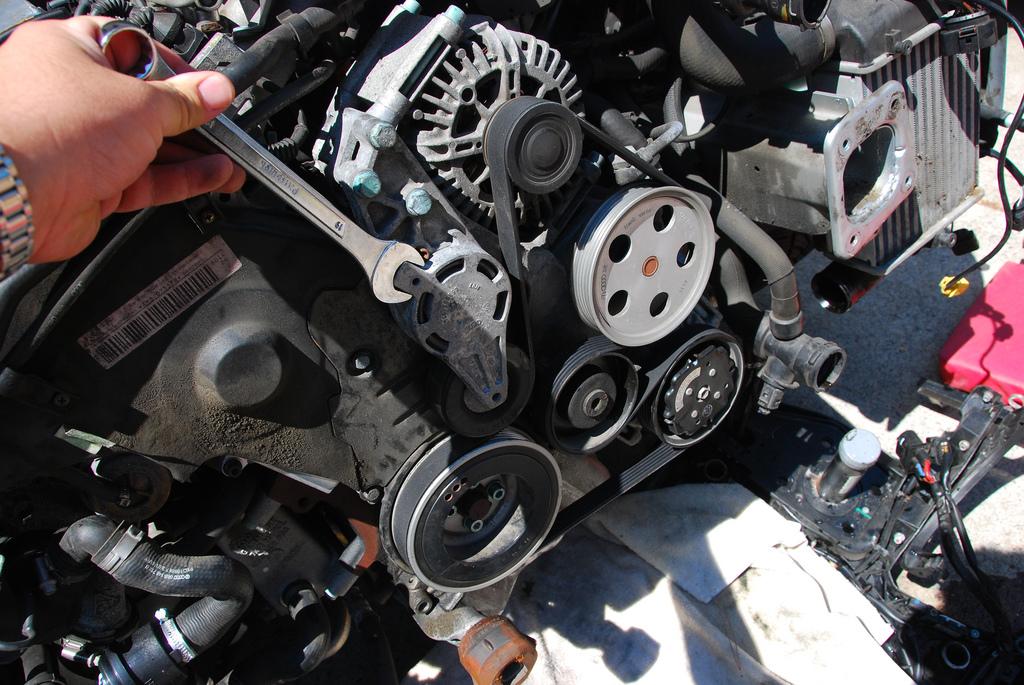
While a stretched timing belt can affect your engine’s performance, a broken belt can get you stranded in the cold or, if you have an interference engine, may even damage your engine.
Therefore, you should frequently inspect the many belts under the hood, along with the many engine hoses plus wires and cables for potential corrosion, cracking or breaking. Especially get them checked every fall before winter hits to keep your engine in good shape and better winterize your car.
For more on servicing engine’s belts:
READ MORE
- The Different Types Of Car Belts And Their Functions
- When And How To Change A Serpentine Belt
- What Happens When Timing Belt Breaks?
- How Often Should I Change The Timing Belt?
Check transmission fluid
Now, don’t get transmission fluid confused with engine oil.
While the engine oil primarily lubricates the engine, a car’s transmission fluid serves multiple functions, including lubricating and protecting all moving components of your transmission, acting as a coolant and viscous fluid to transmit power from the engine to the transmission, and more.
Then what happens if your car’s transmission fluid runs low? Without needed lubrication, the transmission will run overly hot plus will be subject to excessive wear and tear, thus will malfunction and eventually fail.
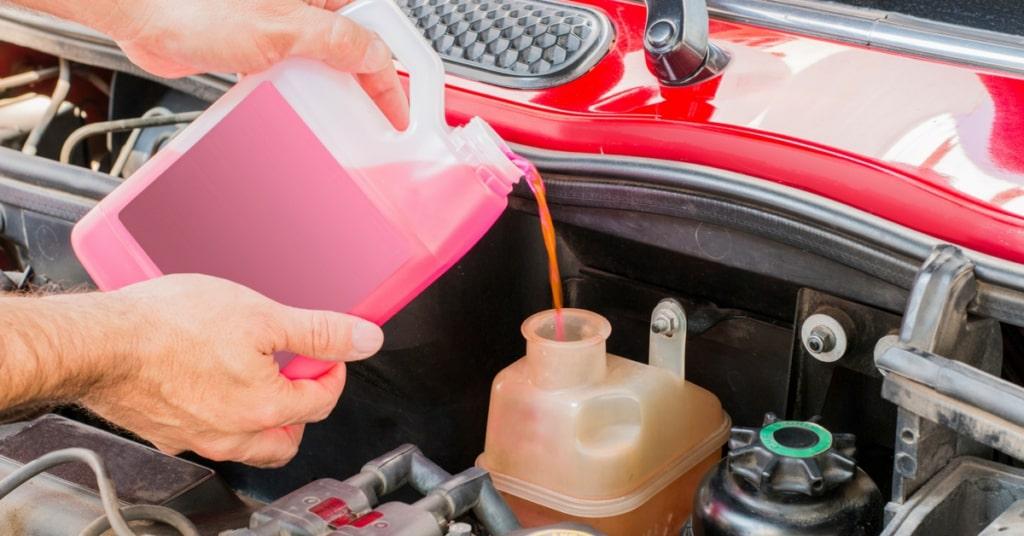
Due to such great importance to a car’s performance, checking and changing transmission fluid as frequently as required is a must. It is so even if you drive a 4WD beast like the Ford F150 that can braves snow and ice or a reliable AWD like Honda CR-V and Nissan Pathfinder, which is also great for uneven and snowy surfaces.
Checking and changing transmission fluid is a maintenance tip you should master as soon as possible. Learn how to do this at home with these easy-to-follow guides:
READ MORE
- Is Engine Oil The Same As Transmission Oil?
- How To Check Transmission Fluid For Manual And Auto Cars
Check Your Battery
Extremely cold weather is especially tough on your car’s battery, as very low temperatures dramatically slow down the chemical reactions required to generate power in the battery.
In short, you’ll experience lower power output: at -15°C or 5°F, the capacity of a fully charged lead-acid battery is reduced by half. In addition, in winter, your engine consumes more current from the battery in order to start. This double trouble is the reason why many drivers experience slow or no-start on freezing winter mornings.

Before winter hits, winterize your car by running a battery load test to check whether your battery is in good shape: charge or replace your battery if needed and also remember to inspect connections for corrosion.
For a complete guide on testing your car battery plus how to test your alternator, the major component of the charging system which charges the battery, refer to the articles below to do this in your own garage.
READ MORE
Pro’s Winter Prep Checklist: Tires
Check Tire Tread
Before winter hits, check your tire tread to make sure they aren’t worn down. You might have heard of the classic “penny” test, but do not rely on this test alone.
The penny test is simple: insert a penny in your grooves with Lincoln’s head facing down. If you cannot see the top of the head, your tires are in good shape, but if you can still see all of Lincoln’s head, your tires are balding and need replacement.
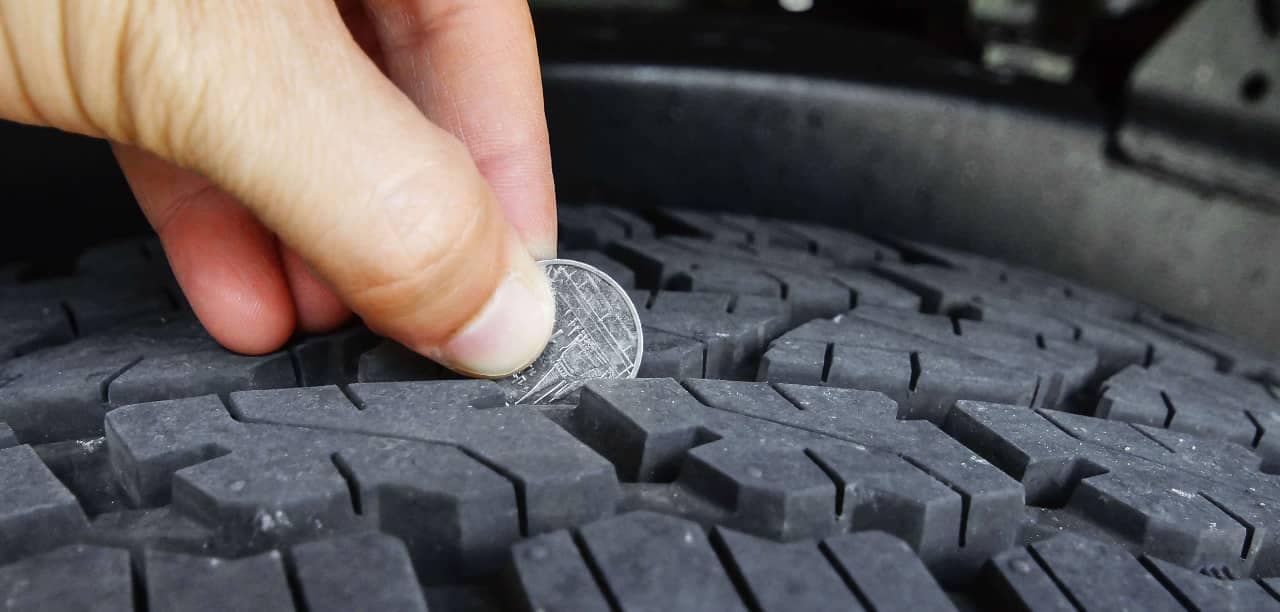
Although this test is talked about all over the internet, technicians deem it by far not sufficient to determine whether a tire needs replacement.
Consider this: tires are made of natural rubber, synthetic rubber and other chemical compounds, which deteriorate over time, even if you rarely drive at all. The longer the tires are sitting there, the faster they age and deteriorate.
While there is no rule of thumb for when to replace a tire, many car and tire manufacturers suggest replacing them at most 6 years from the date of manufacturing. Therefore, to winterize your car, apart from checking your tire tread, it’s best to make sure the tires are still young and strong.
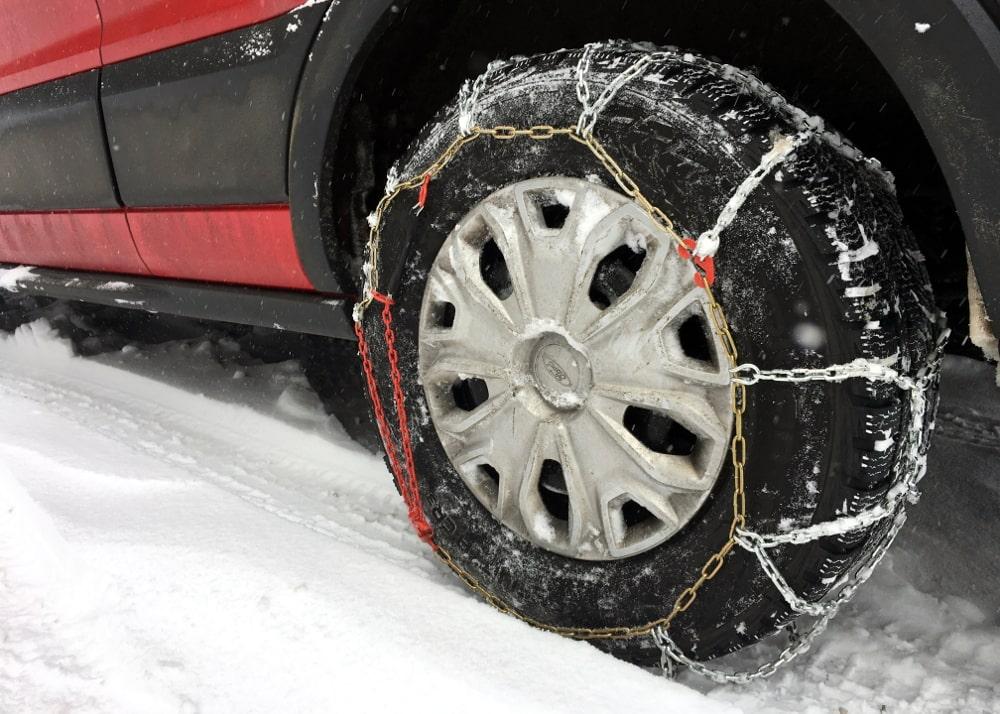
For a complete guide on how to read the age of your tire, plus how to make your tires last longer and more, consult the detailed articles below.
READ MORE
- How Long Do Tires Last And How To Make Them Last Longer
- Nitrogen Vs. Air In Tires – Which Is Better?
Switch to Winter Tires if Necessary
In case of extreme winter with tons of snow and ice, it is ideal to winterize your tires by switching to snow tires, plus having some tire chains ready in your trunk.
It is noted by professionals that with extreme conditions like that in Canada, all-season tires might not be sufficient, although they do provide extra traction.
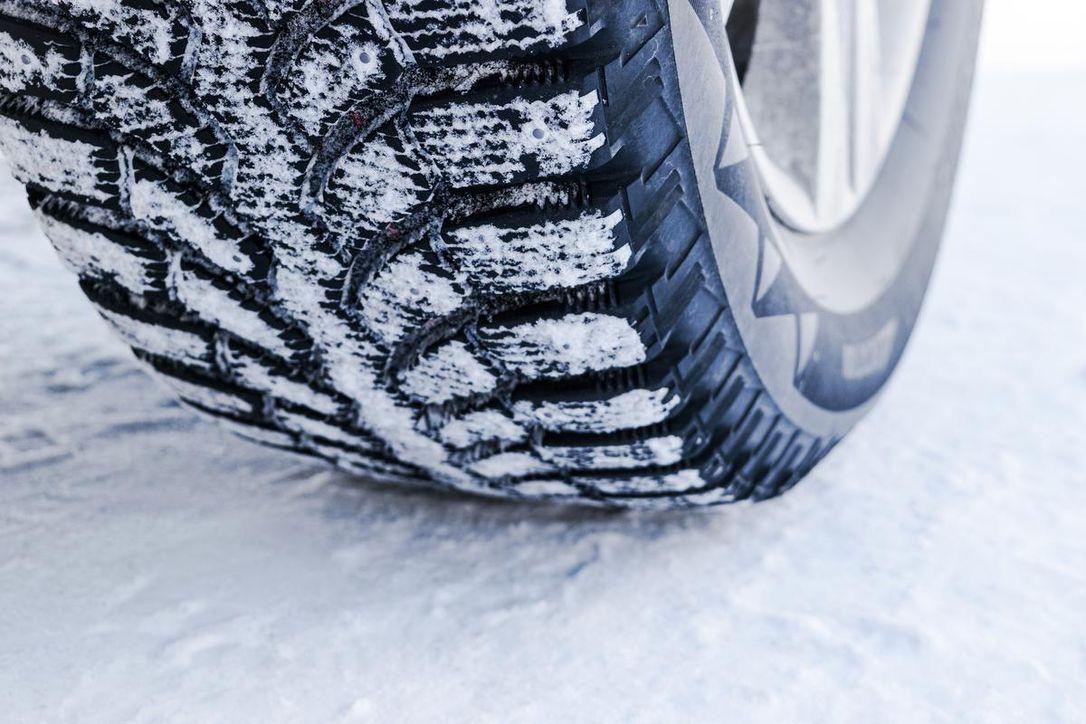
READ MORE
Check Tire Air Pressure
In any weather, properly inflated tires ensure proper contact with the road, smooth handling and minimal wear and tear. In winter, you should check your tire air pressure even more regularly, as very cold weather causes air pressure in your tires to drop.
Tires pressure can decrease about 1 PSI (pound per square inch) for every 10 degrees drop in temperature. The air does not escape, but rather condenses, taking up less space and thus under-inflating the tires.
If you do not own one, invest in a good home air compressors before winter comes to winterize your tires.
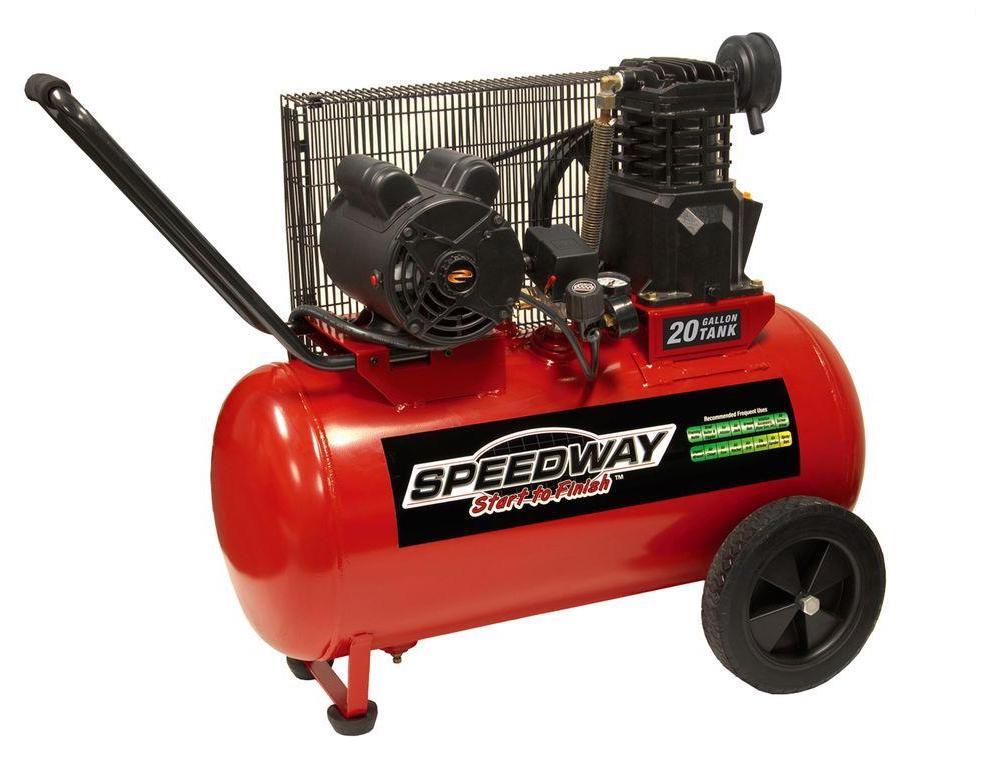
READ MORE
Pro’s Winter Prep Checklist: Safe Driving in Freezing Conditions
Below are pro tips to winterize your car for safe, hassle-free driving in the snow and ice that not many drivers know or ignore.
Check your rear-window defroster
Many states and cities by law require drivers to make sure their car windows are clear of frost or debris so they can clearly see what’s behind them. In winter, your rear windows can be covered in frost and snow, creating unsafe driving conditions.
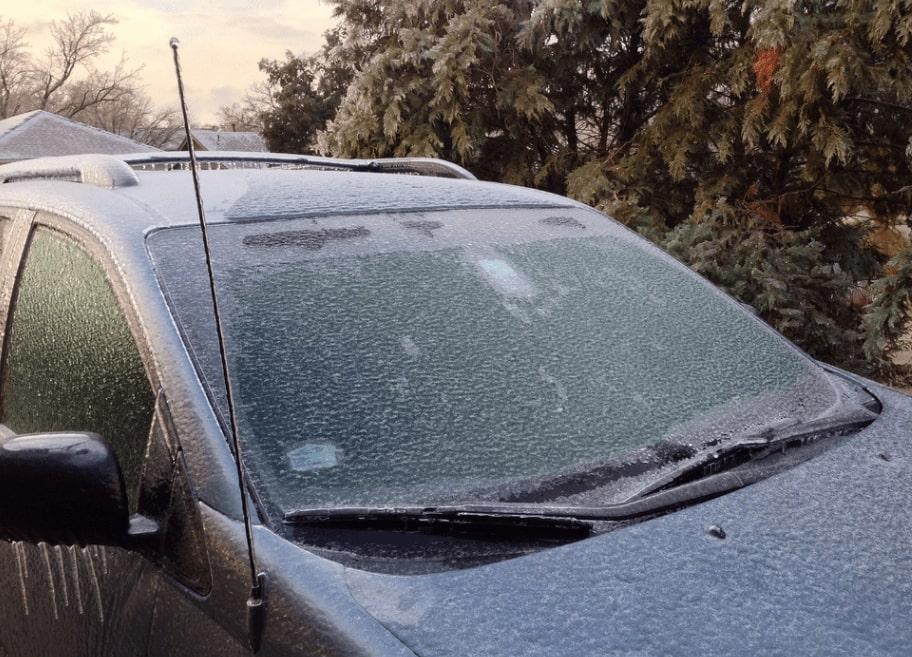
Therefore, when winterizing your car, make sure your rear window defroster works properly before the cold arrives.
Change wiper blades
Although it might not seem an urgent prep, you would not want slow, squeaky blades in rainy or snowy winter weather. Replace your wiper blade if necessary and consider getting heavy-duty wiper blades designed for extreme winter conditions.
Learn how to fix common windshield wipers problems and how to replace them at home with the following complete guides.
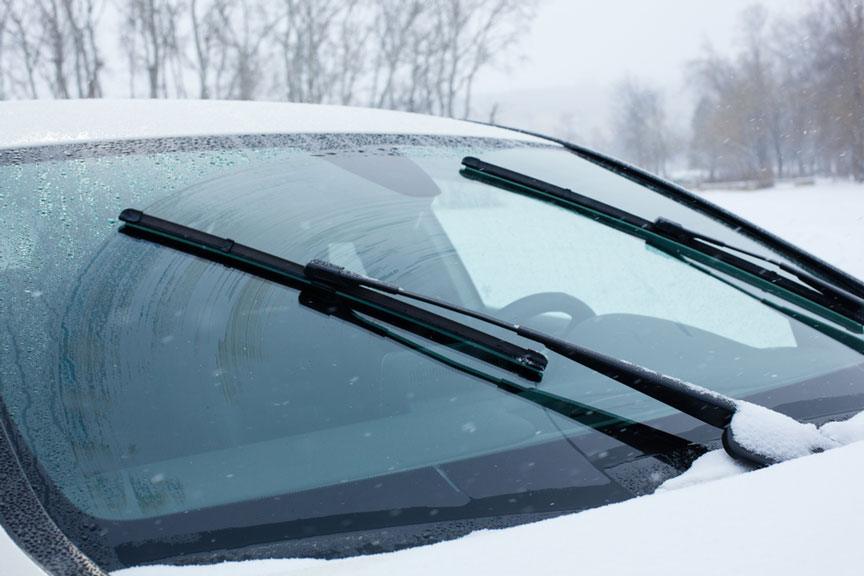
READ MORE
- How To Replace Windshield Wiper Blades
- 5 Ways To Stop Windshield Wipers From Squeaking
- Fixing Windshield Wipers Problems
Change windshield wiper fluid
While you’re at it, make sure your wiper fluid reservoir is full to readily wash away grimes. If temperatures tend to drop below zero where you live, best look for wiper fluid with antifreeze properties.
Pro’s Winter Prep Checklist: How To Stay Warm
If you do not want to shiver in a chilly car that never seems to warm up, winterize your car with these prep jobs to maximize comfort in freezing weather.
Check the heater
To make sure you will stay toasted during winter, make sure to flush your heater before winter comes, a.k.a cleaning out heater core tubes so the heater can heat air effectively and quickly.
READ MORE
- The Major Signs Of A Failing Heater Core
- Car Heater Blowing Cold Air? The Reasons
- Climate Control Vs Air Conditioning – Differences Explained
Check the thermostat
A bad thermostat could be another reason your car never seems to heat up in cold weather.
A thermostat is the small device situated between the engine and the radiator. It facilitates the cooling down of the hot running engine by allowing the flow of engine coolant to the radiator. When the thermostat is open, the now-hot engine coolant flows into the radiator, where it loses heat and cools down.
In extreme winter, or in cars that have not been driven in a while, the thermostat can get stuck in the closed position, thus it cannot enable the hot engine coolant to travel through the car and dissipate warmth.
READ MORE
Check the cabin air filter
To keep your car warm and toasty in the cold months, better clean or replace your cabin air filter to make sure your car heater is working at full capacity.
As the name suggests, the cabin air filter essentially filters the air from outside to get rid of dirt, pollen, and other particles, ensuring cleaner air inside the cabin. A filter covered in dirt will affect the heater’s ability to heat the cabin up quickly in the freezing cold.
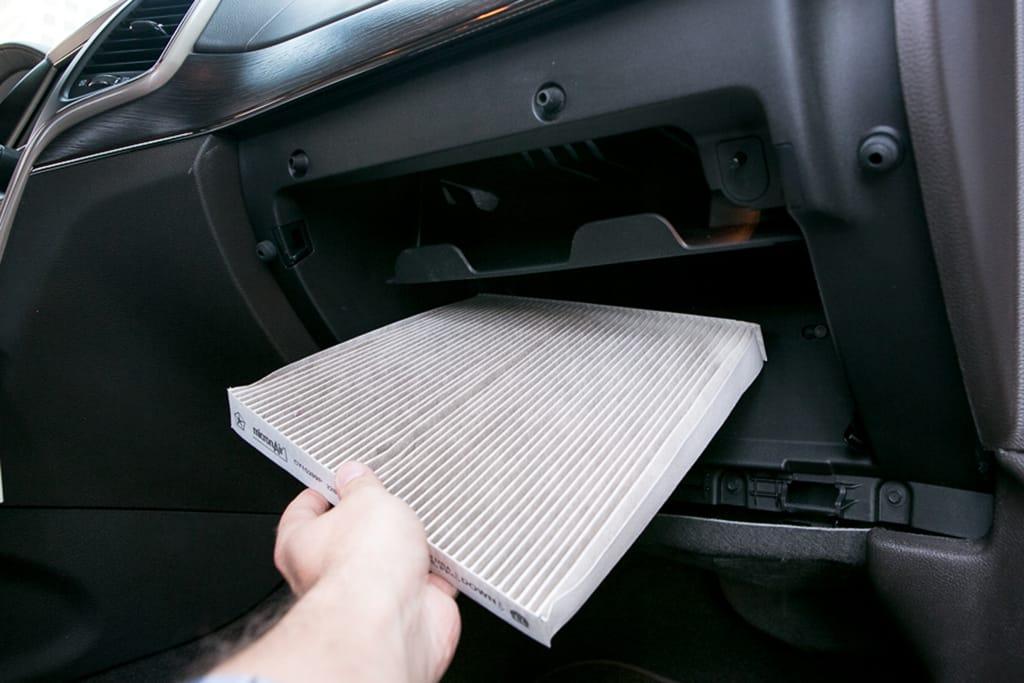
The symptoms of a dirty cabin air filter can be the engine making a screeching noise when the fan is turned up, or if your cabin never seems to warm up.
READ MORE
- Three Signs Of A Dirty Car Air Filter
- How Often To Change Air Filter?
- K&N Air Filter – Is It Worth Your Money?
- Plausible Reasons To Replace Your Oil Filter And Air Filter
Pro’s Winter Prep Checklist: Exterior
Treat your doors, hood & trunk
To avoid your car doors, hood and trunk get stuck in freezing conditions, winterize by cleaning them thoroughly and applying a thin layer of oil or another clear lubricant to the edges.
Treat your windows
If you want to get rid of the thick layer of ice and frost on your windshield and windows, never ever pour hot water on them, as such sudden change in temperature can cause them to crack. In addition, if the hot water seeps down past the window, it could cause the locking system or power window features to malfunction.
Instead, create a cheap and effective defrost solution with a 1:3 ratio of water to vinegar and spray it on the windshield and on all windows before it gets cold. The vinegar’s acidity will lessen the buildup of ice and frost. Or grab some de-icing spray from your local auto shop.
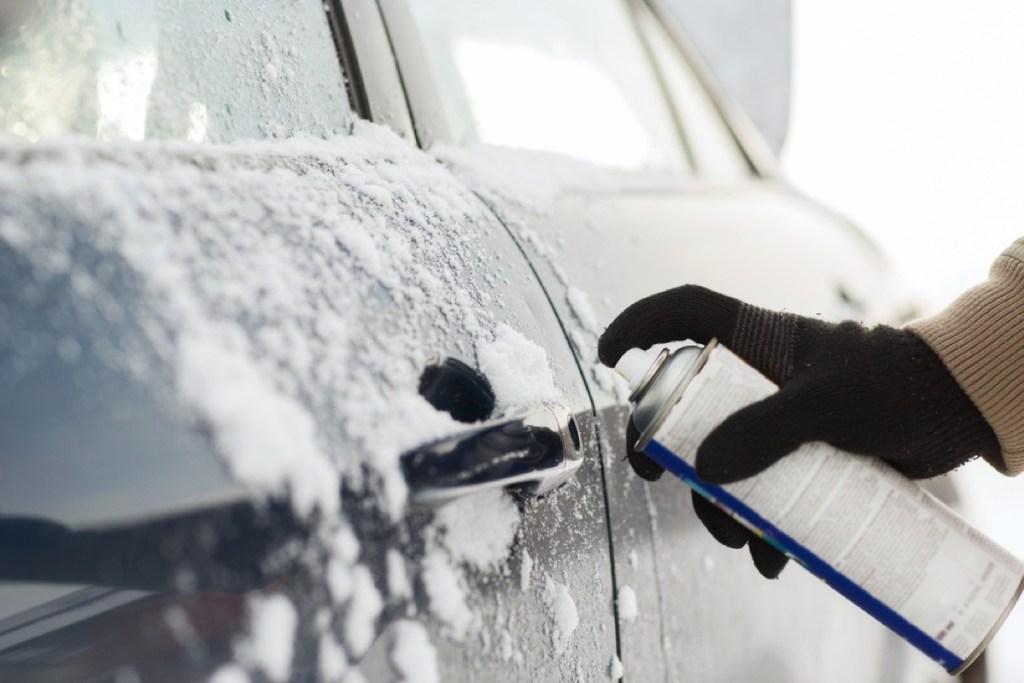
However, in harsh winter, you’ll also need a hand scraper. Spray the solution on the frosted windows to break down the frost faster then scrape.
READ MORE
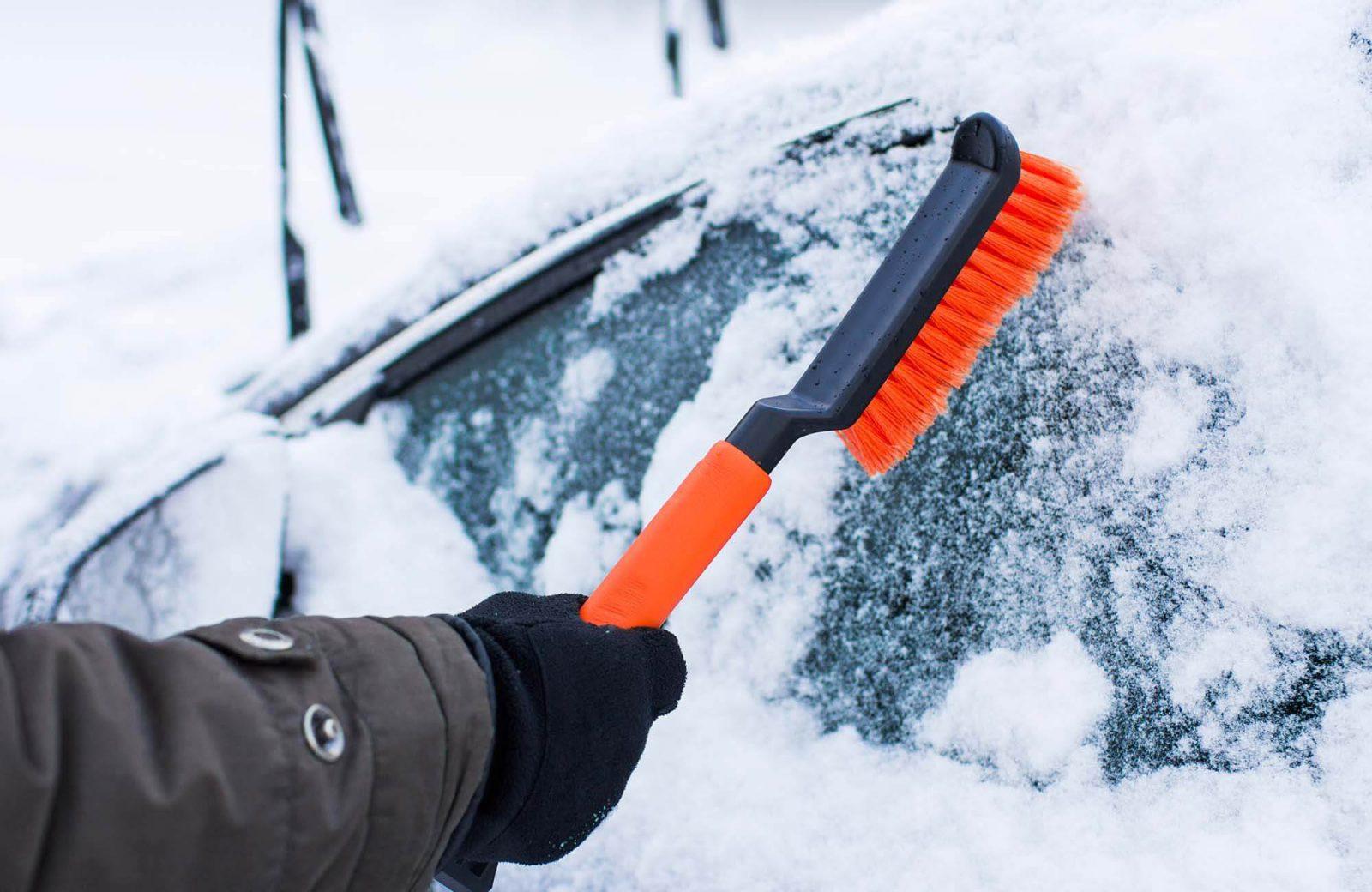
Waxing
For extra protection for the paint job, waxing your car after a car wash will better prevent dirt and debris accumulate and help liquids easily roll off the surface.
READ MORE
What to keep in your car in winter
Winter survival pack
After servicing your car for a thorough winter prep, pack these items in your trunk to prepare for the many hazards that can come with extreme winter and to survive if you get stranded with a dead car:
- Extra warm clothes, blankets, water and durable food and snacks
- Gloves, shovel and ice scraper
- Flashlight
- First aid kit
- Phone charger
- Booster cables
- Tire pressure gauge, inflator and patch kit


